Robust Quantum Computational Advantage Using Fermionic Linear Optics and Magic Input States
Michał Oszmaniec¹, Zoltán Zimborás², Mauro Morales³,
Ninnat Dangniam¹


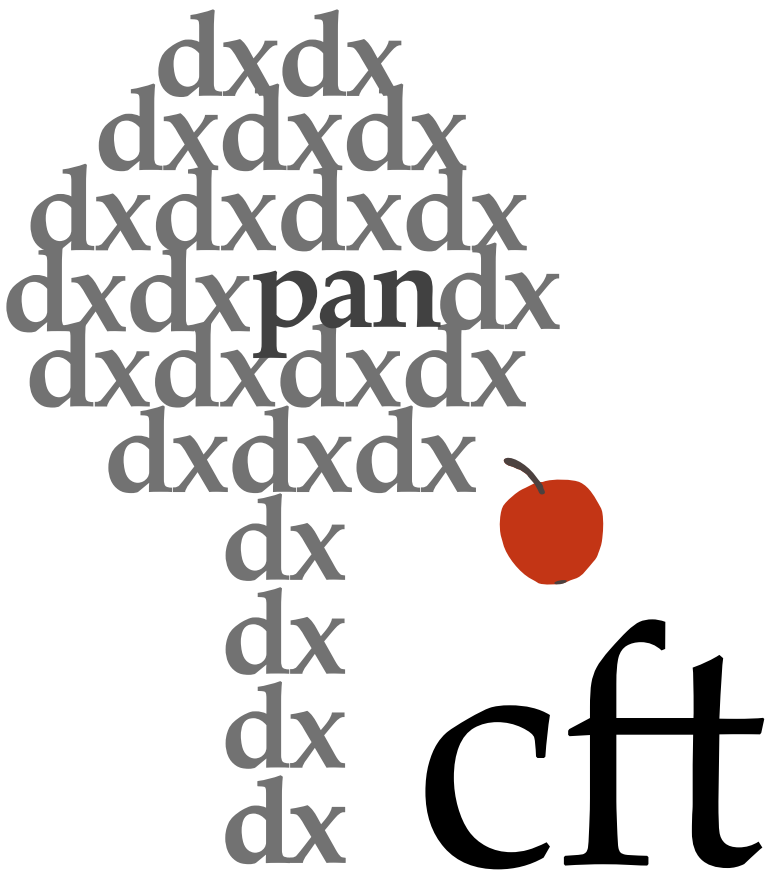

AQIS, 7-9 Dec 2020
¹ Center for Theoretical Physics, Polish Academy of Sciences, ² Wigner Research Centre for Physics, ³ Centre for Quantum Software and Information, University of Technology Sydney


- Introduction and motivations
- Quantum computational supremacy
- Fermion Sampling with magic input states
- Experimental prospects
-
Results: hardness guarantees and certification
- Anticoncentration
- Robust average-case hardness by Cayley path
- Certification
- Summary
- Introduction and motivations
- Quantum computational supremacy
- Fermion Sampling with magic input states
- Experimental prospects
-
Results: hardness guarantees and certification
- Anticoncentration
- Robust average-case hardness by Cayley path
- Certification
- Summary
Quantum computational supremacy
- Quantum supremacy: the ability of a quantum system to perform a task that classical computers cannot, regardless of whether the task is useful
- Sampling problems can demonstrate quantum supremacy with few assumptions. Boson Sampling is the canonical example (Aaronson & Arkhipov, STOC'11)
-
Random circuit sampling (RCS) is the leading candidate due its rigorous hardness guarantees
- One- and two-qubit gates are chosen randomly
- Demonstrated on the 53-qubit Sycamore quantum processor (Arute et al., Nature 2019)

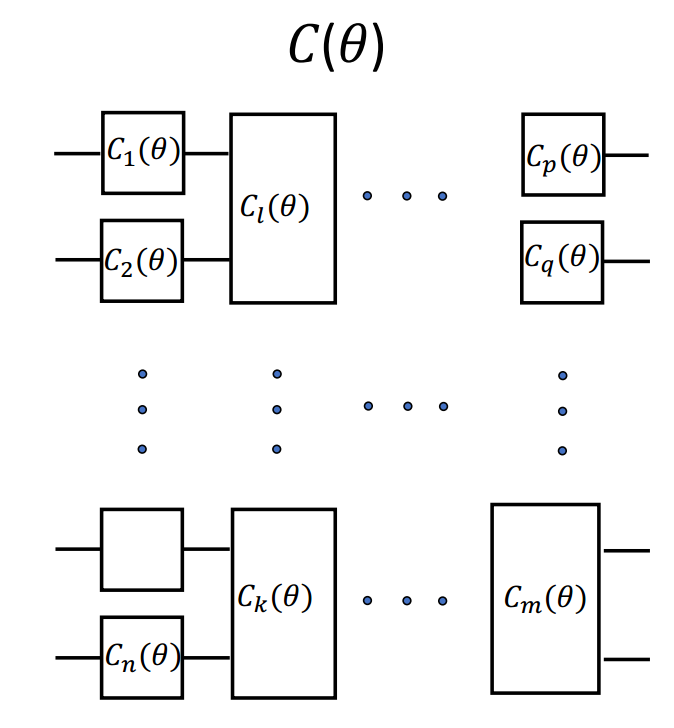
Movassagh 2019
Fermion Sampling with Magic Inputs
- Analogue of Boson Sampling: while fermionic linear optics (FLO) with fermion-number inputs are classically efficiently simulable, FLO supplemented with entangled "magic" states
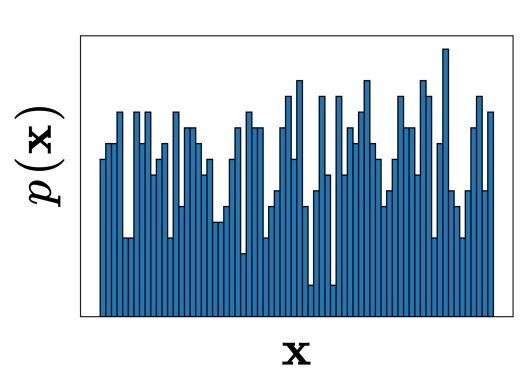
-
promotes (active) FLO to universal quantum computation (Bravyi & Kitaev, Ann Phys 2002, Bravyi, PRA 2006, Hebenstreit et al., 2020)
-
leads to worst-case hard probabilities even when restricted to number-perserving (passive ) FLO (Ivanov, PRA 2017)
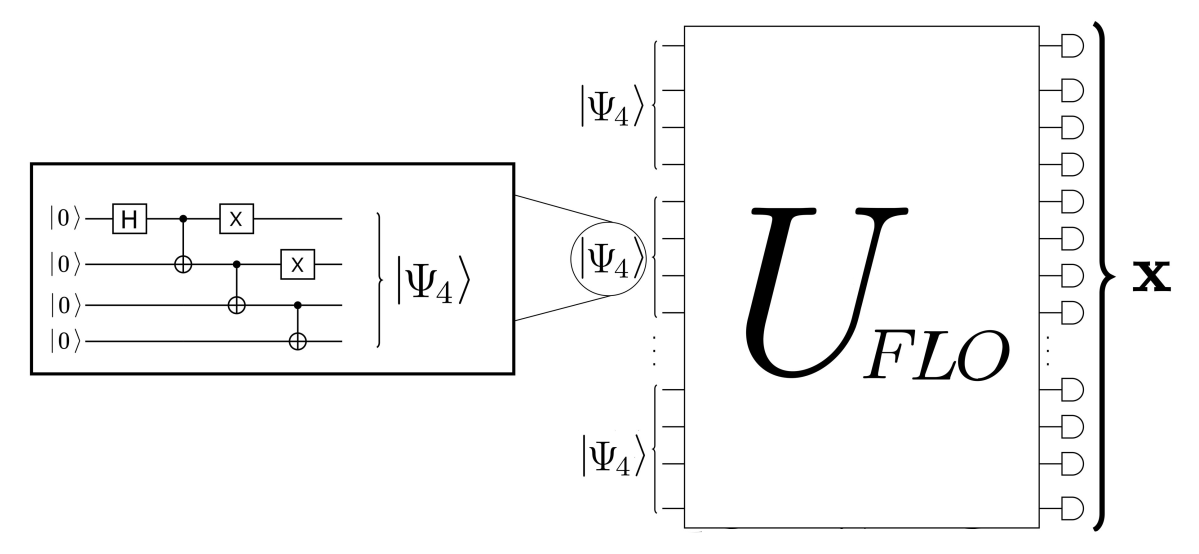
Experimental Prospects
FLO circuits (say under the Jordan-Wigner transformation) are native to superconducting qubit architecture
- Two-qubit fermionic SWAP (iSWAP) gates realized with high fidelity in the demonstration of RCS on the 53-qubit Sycamore quantum processor (Arute et al., Nature 2019, Foxen et al., PRL 2020)
- The same processor used for proof-of-principle quantum chemistry calculation (Arute et al., Science 2020), non-planar QAOA (Arute et al. 2020)
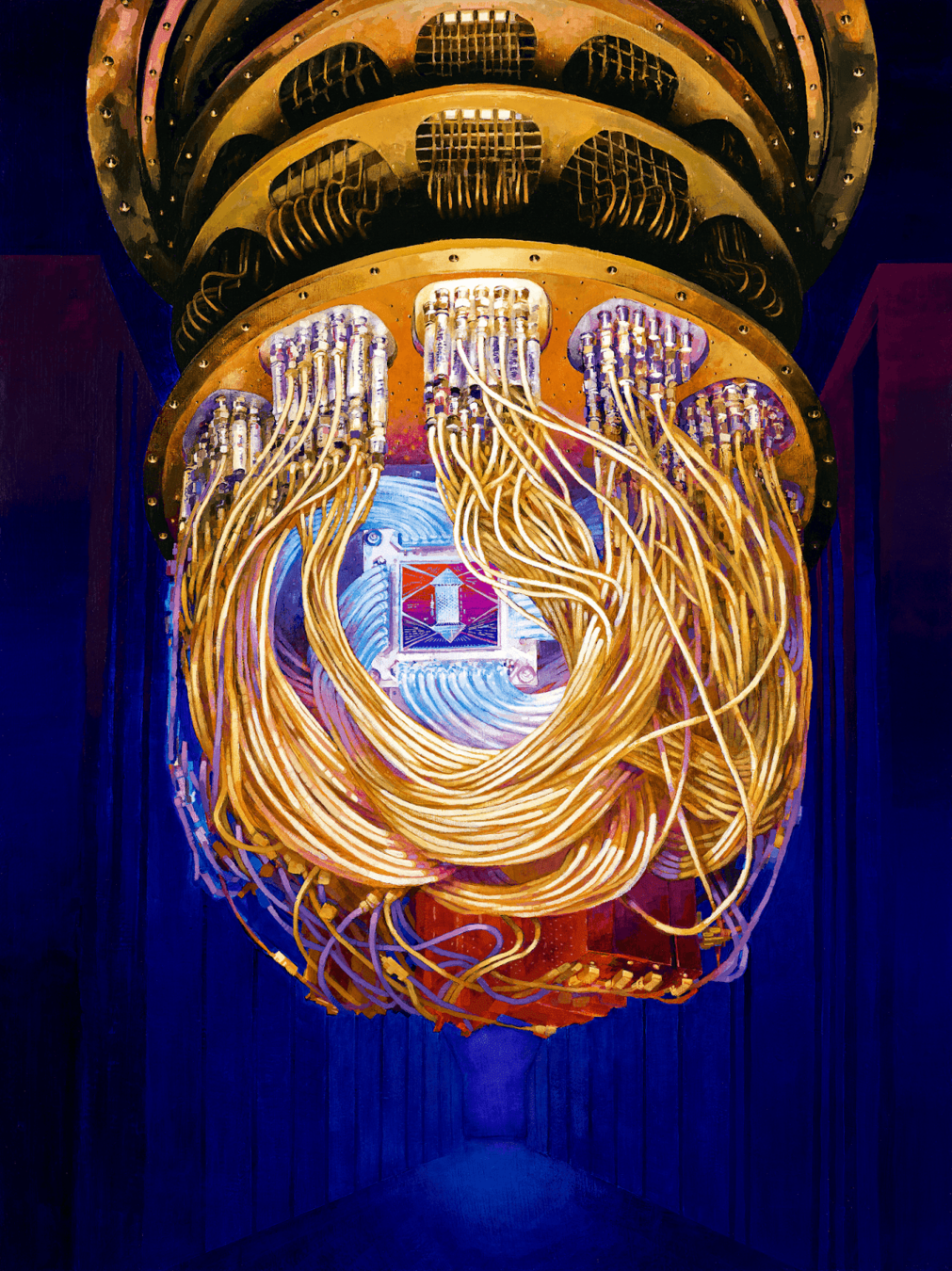
-
Introduction and motivations
- Quantum computational supremacy
- Fermion Sampling with magic input states
- Experimental prospects
-
Results: hardness guarantees and certification
- Anticoncentration
- Robust average-case hardness by Cayley path
- Certification
- Summary
Groups of FLO transformations
\(d\) fermionic modes are described by \(d\) creation and \(d\) annihilation operators
or \(2d\) majorana operators
- Number-preserving (passive) FLO forms the group \(\mathrm{U}(d)\) of unitary matrices that do not mix creation and annihilation operators
- Active FLO forms the group \(\mathrm{SO}(2d)\) are parity-preserving transformation
Both groups are described by poly(\(d\)) parameters even though the groups act as circuits on Hilbert space \(\mathcal{H}\) of dimension exponential in \(d\)
Classical sampler
Result:
Anticoncentration
Approximations of \(p_{\mathbf x_0}(V,\Psi_{in})\)
on average
(over Haar distribution)
Result:
average-case hardness of approximating up to additive error \(\epsilon =\exp(-\Theta(N^6))\)
Our results supporting the supremacy conjecture
PH collapse
(conjectured to be false)
Conjecture: average-case hardness of approximating up to additive error \(\epsilon = (\dim\mathcal{H})^{-1}/poly(N)\)
Anticoncentration
- We use the Paley-Zygmund inequality and moments calculated from the group-theoretic properties
- We do not use the 2-design property (In fact, \(\nu\) can be proven not to form a 2-design)
- Numerics suggests that \(p_{\mathbf x_0}(V,\Psi)\) does not anticoncentrate if \(\Psi\) is Gaussian
For any \(0 < \alpha < 1\), There exists a constant \(C>0\) such that
Average-case hardness: Cayley path

- Goal: construct a low-degree rational interpolation between a #P-hard FLO circuit and generic circuits
- Use polynomial interpolation technique to recover the value of the worst-case probability from those of generic circuits
- To achieve the goal, we use the Cayley-path deformation (Movassagh 2019)
Difference to previous work: instead of deforming one- and two-qubit gates at the level of physical circuits, we deform at the level of the group element, which is then represented as a global circuit while maintaining the low-degree structure
It is #P-hard to compute values of \(p_{\mathbf x_0}(V,\Psi_{in})\) with probability greater than \(\frac{3}{4}+\frac{1}{\mathrm{poly}{N}}\) over the choice of \(V\) w.r.t. the Haar measure
Average-case hardness
it is #P-hard to approximate probability \(p_{\mathbf x_0}(V,\Psi_{in})\) to within accuracy \(\epsilon =\exp(-\Theta(N^6))\) with probability greater than \(1-o(N^{-2})\) over the choice of \(V\) w.r.t. the Haar measure
Robustness
- Movassagh's result: \(\epsilon =\exp(-\Theta(N^{4.5}))\) for the Google's layout
- Supremacy conjecture: \(\epsilon = (\dim\mathcal{H})^{-1}/poly(N)\)
Certification
Assuming that the circuit is FLO, the circuit \(V\) can be efficiently estimated using \(poly(d,\epsilon^{-1})\) single-mode input states and computational-basis measurements, where \(\epsilon\) is the estimation error in the diamond distance
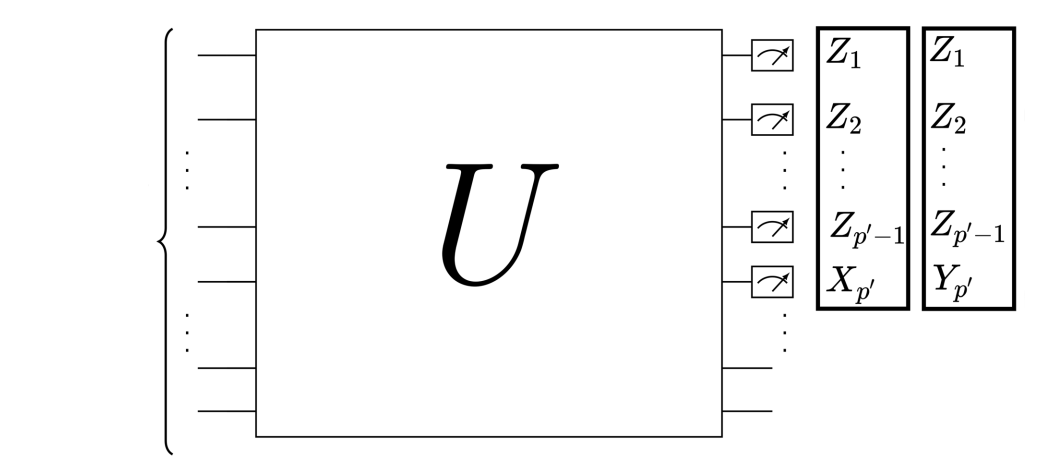
Conclusion
- We propose Fermion Sampling scheme with magic input states which utilize gate sets and architecture native to superconducting devices and has the potential to be realized in near-term
- We provide state-of-the-art hardness guarantees by proving
- Anticoncentration
- Robust average-case hardness of computing the output probabilities
- The hardness guarantees are comparable to RCS and surpassing Boson Sampling
- Both results are derived using the group structure of FLO circuits
- Assuming that we have an FLO circuit, the circuit can be certified efficiently using resources scaling polynomially with the system size